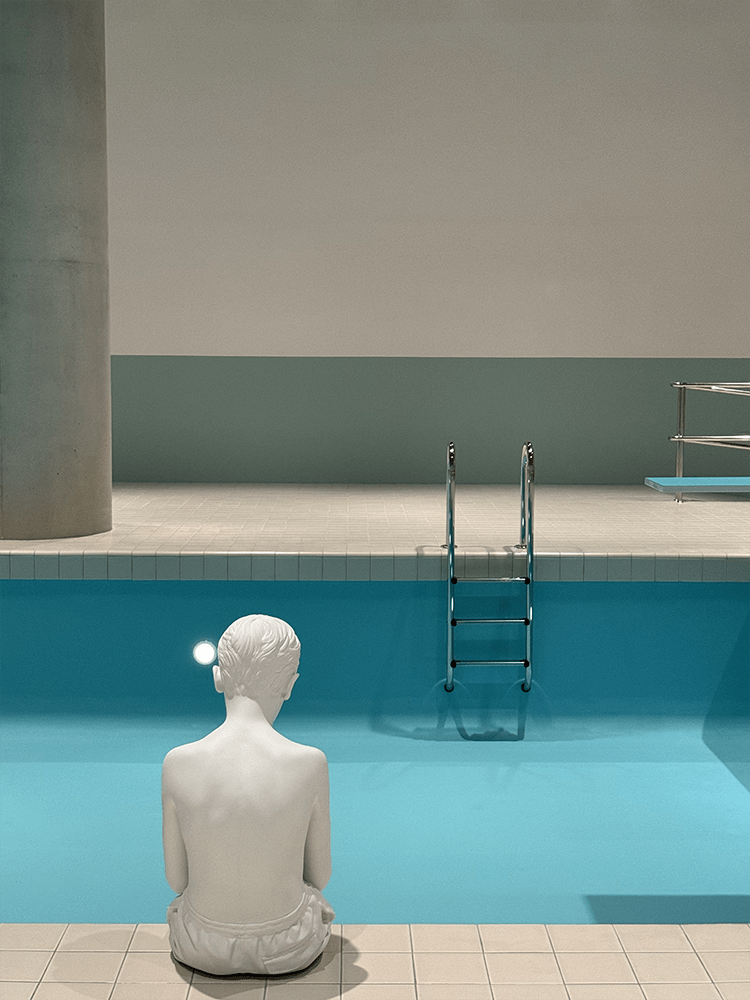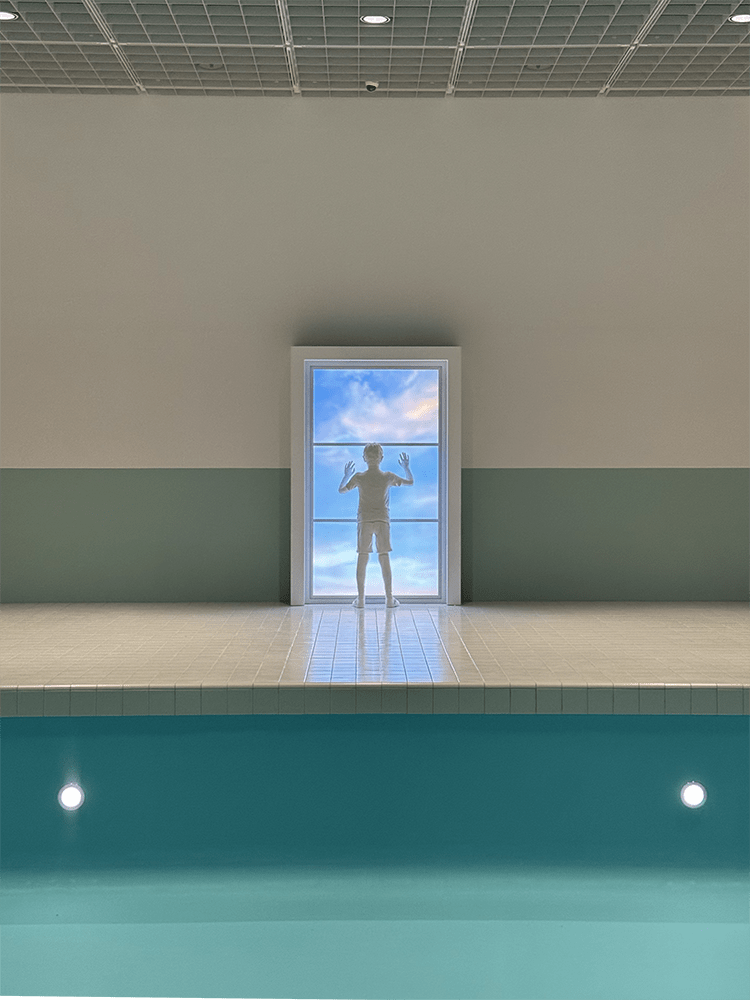Seoul Art & Architecture Travel Journal: A Visit to Amorepacific Headquarters
A Must-See for Design & Architecture Lovers: Amorepacific Headquarters, Yongsan
Amorepacific is a major South Korean beauty conglomerate — the parent company behind familiar brands like Laneige, Innisfree, Sulwhasoo, Hera, and Etude. I went expecting a modern, corporate campus — it is designed by a famous architect, after all, but instead, I found a quietly poetic space that felt more like a short museum visit than an office tour.
The building was designed by British architect David Chipperfield, the creative mind behind landmarks such as Berlin’s Neues Museum and the Turner Contemporary in the UK. His restrained, refined approach gives the building, specifically the public foyer areas, a calm, contemplative quality that rewards slow looking and wandering.
Located in Seoul’s Yongsan district, the structure reads as a subtle presence by day, harmonizing with neighboring office blocks. After dusk, thoughtful lighting turns it into a modern, romantic focal point — an unexpected urban lantern that’s well worth visiting if you love architectural detail, materiality, and quiet public space.
Hidden Contemporary Art at Amorepacific Museum: A Quiet Treasure in a Beauty HQ
The museum inside Amorepacific’s headquarters is a low-profile gem — mostly known to art enthusiasts and employees rather than the general public. Don’t confuse it with the rotating exhibition and event area in the first-floor lobby; the museum’s main galleries are tucked away in the basement.
Ticketing is minimal: a small counter near one of the entrances, though the museum strongly recommends buying tickets online in advance. We hadn’t done that and were told same-day tickets were sold out. After explaining we were short-stay tourists with only one chance to visit the neighborhood, staff kindly made an exception and let us in.
The primary gallery sits below ground, reachable by one or two lift lobbies or the staircase beside the ticket desk — an intimate descent that prepares you for the calm, focused art spaces below.
Art Experience:
Elmgreen & Dragset — "Spaces": A Quiet, Thoughtful Installation at Amorepacific Museum
Highlight 1: The Surreal Empty Swimming Pool — Amore Pacific Pool (2024)
During my visit the museum was showing Elmgreen & Dragset: Spaces, a survey of the Scandinavian duo Michael Elmgreen and Ingar Dragset, organized in collaboration with PACE Gallery.
The main gallery is an open, flexible hall with a high ceiling, arranged for free circulation rather than a fixed route — perfect for large-scale installations and immersive encounters.
A standout is Amore Pacific Pool (2024): a convincing indoor swimming-pool setting complete with a drained, life-size pool and eerily ordinary human figurines. At the far end sits Surveillance (2024), a life-size figure of a young man perched on a tall chair like a lifeguard, peering through a telescope — a quietly uncanny tableau that lingers in the mind.
“The drained swimming pool is a recurring motif in Elmgreen & Dragset’s work, suggesting the decline of public space and loss of community today.”
Installation view, Elmgreen & Dragset: Spaces, Amorepacific Museum of Art, 2024.
Installation view of Elmgreen & Dragset: Spaces, Amorepacific Museum of Art, 2024.
Elmgreen & Dragset, The Screen, 2021. Installation view of Elmgreen & Dragset: Spaces, Amorepacific Museum of Art, 2024.
This piece reminded me of Elmgreen & Dragset’s Van Gogh’s Ear (2016), which was installed outside the Rockefeller Building on Fifth Avenue — a large, empty pool curved into the shape of an ear and displayed vertically.
Though Van Gogh’s Ear and Amore Pacific Pool differ in intention and context, both displace a familiar, leisure-associated object in ways that prompt the same question: why? The unexpected setting pushes viewers to reconsider public space, function, and the stories we attach to everyday structures.
Highlight 2 — The Cloud: A Tense, Hyperreal Restaurant Mise-en-Scène
The Cloud is a meticulously staged, fictional restaurant that feels more like a theatrical set than a dining room. Every detail — props, lighting, ambient sound — is calibrated to create a convincing, uncanny environment.
Entering the space, I expected warmth but found an empty, dimly lit high‑end restaurant that seemed closed or about to close. The room is uninviting; only one figurine sits at a central table, absorbed in a video call on her phone. The figure is startlingly lifelike, and that realism injects a quiet, mounting suspense — you half expect a scene from a vintage thriller to unfold.
A short distance from the entrance, a door leads to an industrial kitchen. Fully equipped at first glance, it reads instead like a sterile lab: figurines in lab suits peer into microscopes, props resemble samples, and yellow PVC freezer curtains hang in the space. The clinical, scientific atmosphere is a chilling counterpoint to the restaurant’s theatrical domesticity, amplifying the installation’s eerie tension.
Installation view of Elmgreen & Dragset: Spaces, Amorepacific Museum of Art, 2024.
Installation view of Elmgreen & Dragset: Spaces, Amorepacific Museum of Art, 2024.
Highlight 3 — Shadow House: An Eerie, Desolate Modern Home and a Boy Left Alone
The final standout is Shadow House, a life-size modern residence framed by large windows. From the outside, it looked like a typical contemporary home — sleek furniture, minimalist design — but stepping inside reveals unsettling details: sinks with unnaturally curled and joined pipes, subtle distortions in everyday objects, and other small anomalies that unsettle the domestic calm.
The installation creates the uneasy feeling of trespassing into someone’s private life. The house is otherwise empty except for a single figurine of a boy standing close to the window, facing outward with an impassive, distant gaze. His presence intensifies the desolation; the scene is quietly creepy, yet you can’t help but linger and inspect the carefully crafted minutiae.
The Korea Times captured this tone well in its review of the exhibition — their description of Shadow House resonated strongly with my experience. Link to the article here.
““It’s almost like a horror movie setup,” Elmgreen said of the deserted family home, noting that the Oscar-winning film “Parasite” was one of the subtle inspirations for the piece. “[In the movie,] a house was the element that triggered the whole narrative, that triggered the whole story.””
Installation view of Elmgreen & Dragset: Spaces, Amorepacific Museum of Art, 2024.
Elmgreen & Dragset, Tree of Life, 2024.
Installation view of Elmgreen & Dragset: Spaces, Amorepacific Museum of Art, 2024.
Highlight 4 — Lobby Sculpture: A Young Man Hanging from a Pole at the Amorepacific HQ
One of the final highlights sits above the staircase near the museum shop and leads down to the basement galleries: a sculpture of a young man hanging by one hand from a vertical pole. Its placement is brilliant — the work feels inseparable from that exact spot, as if it were made for the threshold between lobby and gallery.
As visitors ascend or descend the stairs, they encounter the piece in motion; arriving in the lobby, it reads as an unexpected, almost playful welcome. Here the architecture and artwork amplify each other, turning a simple circulation space into a memorable moment of suspended tension and theatricality.
Note: I arrived near closing time and missed the hanging sculpture on my way down to the galleries. It’s easy to overlook, but for me it was most impactful when seen from the basement as I walked up the stairs — that upward encounter gave the piece a stronger sense of surprise and cinematic lift.
Elmgreen & Dragset, What’s Left?, 2023. Installation view of Elmgreen & Dragset: Spaces, Amorepacific Museum of Art, 2024.
Elmgreen & Dragset, What’s Left?, 2023. Installation view of Elmgreen & Dragset: Spaces, Amorepacific Museum of Art, 2024.
Found this helpful? 📌 Pin the images above to save it for later and share the inspiration with others!














